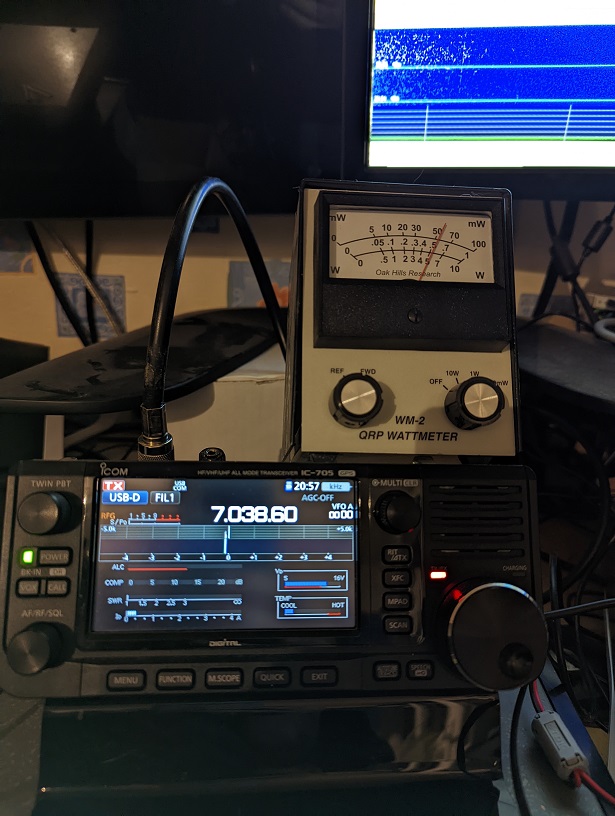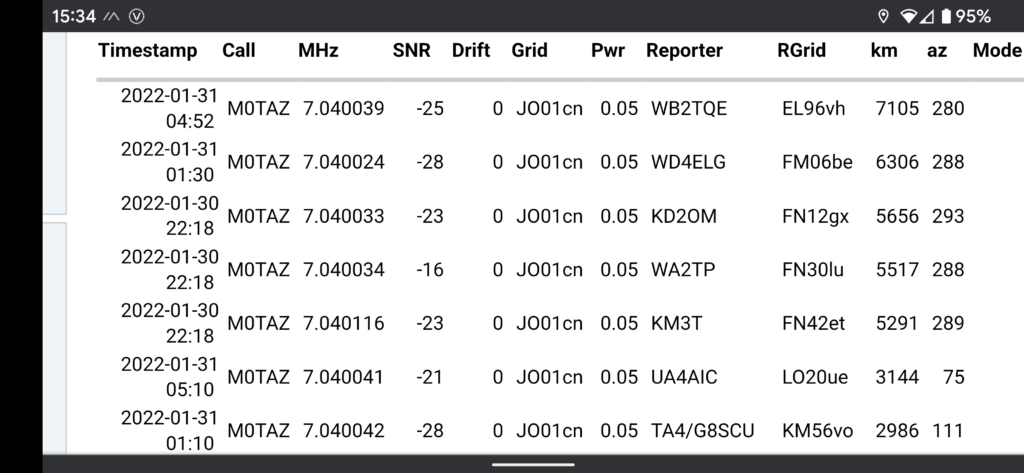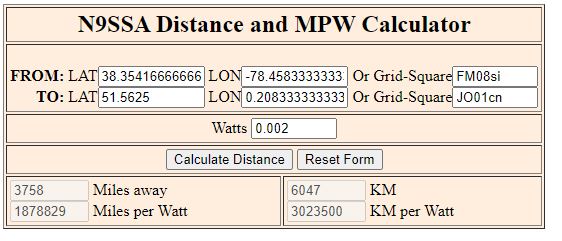OK its controversial, but I need to ask the question what does it actually tell you about your ability to make a QSO.
I would argue not a lot, sure its a fantastic tool for telling you how antenna A compares to Antenna B or what are the best times to work country x. In many cases the ability to work Australia on 1w is not going to be reproducible on SSB, or even on FT8 in many cases.
So the question is does it set unrealistic expectation that people can work great DX on a very poor inefficient antenna with a 5w radio. Possibly

Anyhow despite that I wanted to have a play with WSPR once again, but I would only limit myself to 50mW. So what could I “work”

OK so in the next test I turned the power down to 20mW

Lastly I turned the power down to 5mW and was received in the following locations

Lastly I decreased the power to 2mW and received the following locations


So back to my question, if your running WSPR to simply tick of DXCC then its quite easy even with a miniscule amount of power. If you really want to find out how good your antenna is why now try 2mW, and then compare how many stations can spot your signal over 1,000 KM
Station setup IC705
Power measured using a Oak Hill WM2 power meter accuracy better than 5%
Antenna doublet, fed with 300 Ohm ribbon and 10m per leg

It’s a useful tool to have in your tool box to give you a part of the bigger picture, but can be overused and praised by those amateurs easily impressed?
Thanks Dough, Interesting. I don’t dislike it but think its use can be overstated.
Hello Dave, you can do several things with WSPR. Propagation research is only one thing. It’s just what you search for or what you want to use it for. I like to be able doing antenna comparisations now. But you can also compare your station with others. And indeed, you can find out good propagation times but it is never certain you can make a QSO. Things differ from day to day and also propagation is not always reciproke. Well done with the 50mW/20mW. I’ve done some WSPR with 10mW on 10m several years ago when the cycle was on a peak. 73, Bas
WSPR is an important tool for Citizen Scientists in the continuing study of the ionosphere and propagation. See the workshop presentations at https://www.hamsci.org/ 73, Carol KP4MD